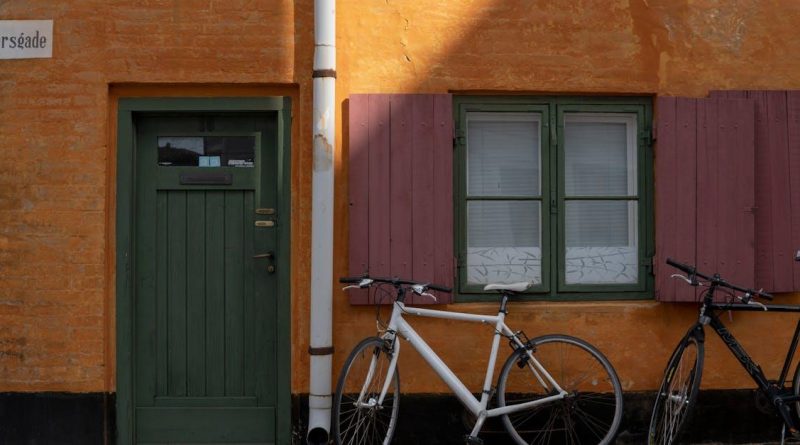Difference Between Danish and Dutch: Understanding the Key Distinctions Between Denmark and the Netherlands
Many people confuse Danish and Dutch, often thinking they refer to the same language or culture. However, Denmark and the Netherlands are two entirely different countries, and their respective languages—Danish and Dutch—belong to separate linguistic groups.
So, what exactly is the difference between Danish and Dutch? In this article, we’ll explore the geographical, linguistic, and cultural distinctions between these two nations to clarify the confusion once and for all. For a more detailed explanation, visit this in-depth guide on The Danish Dream.
Denmark vs. The Netherlands: Two Distinct Countries
One of the most common misconceptions is that Danish and Dutch refer to the same country or people.
- Denmark is a Scandinavian country located in Northern Europe, bordering Germany to the south. It consists of the Jutland Peninsula and over 400 islands, with Copenhagen as its capital.
- The Netherlands is located in Western Europe, bordering Germany and Belgium. It is famous for Amsterdam, its capital, as well as tulip fields, canals, and windmills.
Even though both countries are in Europe, they belong to different cultural and linguistic regions.
Danish vs. Dutch: The Language Differences
Another major distinction is the languages spoken in Denmark and the Netherlands.
Danish (Dansk)
- Spoken in: Denmark, parts of Greenland, and the Faroe Islands.
- Language family: North Germanic (Scandinavian), related to Swedish and Norwegian.
- Key Features:
- Uses Æ, Ø, and Å, unique letters not found in Dutch.
- Has soft and fluid pronunciation, making it hard to distinguish words.
- Shares mutual intelligibility with Swedish and Norwegian, meaning speakers can somewhat understand each other.
Dutch (Nederlands)
- Spoken in: The Netherlands, Belgium (Flemish region), and Suriname.
- Language family: West Germanic, related to German and English.
- Key Features:
- Uses IJ, a letter combination unique to Dutch.
- Has harder consonants and a guttural “G” sound similar to German.
- More closely resembles English than Danish does.
Because these languages come from different Germanic branches, they are NOT mutually intelligible. A Danish speaker would not automatically understand Dutch, and vice versa.
Cultural Differences Between Danes and Dutch People
Beyond language, Denmark and the Netherlands also have distinct cultural identities shaped by their history, traditions, and ways of life.
1. Social Behavior and Lifestyle
- Danes are often described as reserved and polite, valuing personal space and a work-life balance. The Danish concept of “hygge” (a sense of coziness and well-being) is central to their lifestyle.
- Dutch people, on the other hand, are known for their directness and open-minded approach. Conversations with Dutch people tend to be straightforward, as they appreciate honesty over politeness.
2. Food and Cuisine
- Danish cuisine includes smørrebrød (open-faced sandwiches), frikadeller (meatballs), and Danish pastries, known locally as wienerbrød.
- Dutch cuisine is famous for stroopwafels (syrup waffles), bitterballen (deep-fried meatballs), and herring with onions.
3. Biking Culture
Both Denmark and the Netherlands are known for their cycling culture, but Amsterdam often competes with Copenhagen for the title of most bike-friendly city in the world.
- Copenhagen has dedicated cycling lanes covering more than 390 kilometers, making cycling a primary mode of transport.
- Amsterdam has even more bicycles than people, with an extensive canal and bridge system making biking the most convenient way to get around.
Common Confusions Between Danish and Dutch
The mix-up between Danish and Dutch mainly occurs due to their similar-sounding names in English. However, here’s a simple way to remember the difference:
- Danish = Denmark (North Europe, Scandinavian culture, Danish language).
- Dutch = The Netherlands (Western Europe, Dutch language, tulips, windmills).
Another confusion arises from the name “Holland”. Many people think Holland is the same as the Netherlands, but Holland is actually just a region within the Netherlands, comprising North Holland and South Holland.
Similarly, Greenland and the Faroe Islands are part of the Kingdom of Denmark, but they have their own languages and governance.
Final Thoughts: Difference Between Danish and Dutch
So, what is the difference between Danish and Dutch? The answer is simple:
- They are two separate languages from two different Germanic branches.
- Denmark and the Netherlands are two distinct countries with different cultures and traditions.
- Danish is a Scandinavian language, while Dutch is closer to German and English.
If you ever find yourself confused between Danish and Dutch, just remember:
👉 Danish = Denmark = Scandinavia
👉 Dutch = The Netherlands = Western Europe
For a detailed guide on Danish vs. Dutch, visit this comprehensive article on The Danish Dream.
Now that you know the difference, you’ll never mistake a Dane for a Dutch person again!
